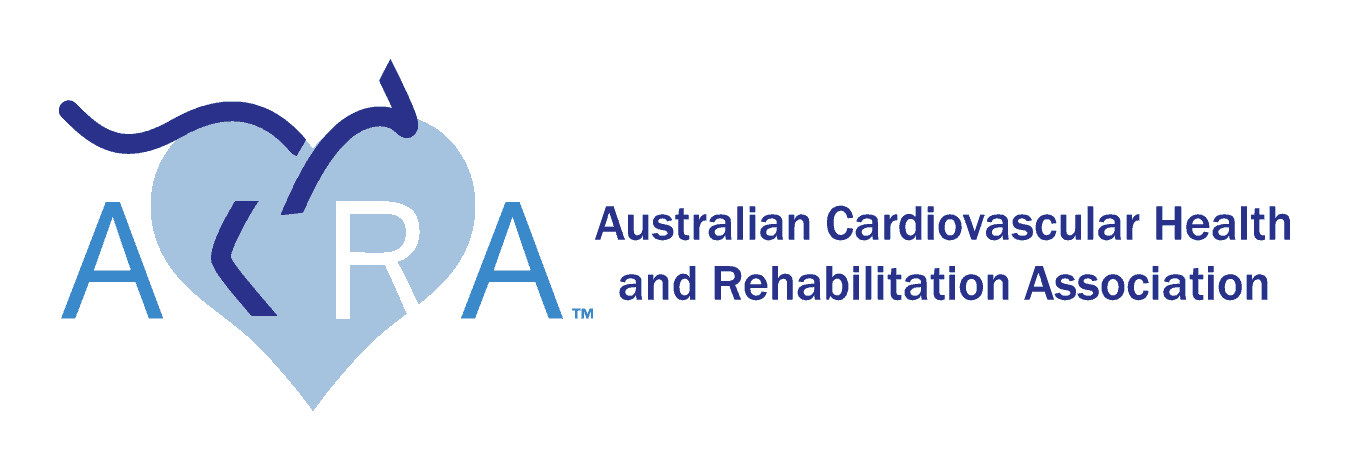ACRA and Heart Foundation Position Statement on telehealth and cardiac rehabilitation
Please find below a position statement from the Heart Foundation and the Australian Cardiovascular Health and Rehabilitation Association about the ongoing place of telehealth in cardiac rehabilitation service delivery.
You can also download a pdf version of the statement here
Participating in a cardiac rehabilitation program is a critical step in a person’s recovery from their heart attack or heart event. However, this effective intervention1 is underutilised in Australia. Many people who could potentially benefit are not referred and are not given the opportunity to participate.
The COVID-19 pandemic has accelerated the uptake and utilisation of telehealth and digital technologies. The Heart Foundation and Australian Cardiovascular Health and Rehabilitation Association welcomes the use of telehealth and innovations in referral and service delivery models that improve access to cardiac rehabilitation. Telehealth and home-based interventions with a range of delivery modes can be offered to patients who cannot attend cardiac rehabilitation, or as an adjunct to cardiac rehabilitation for effective secondary prevention2-5.
Where appropriate, telehealth can be a safe, effective and efficient tool to support healthcare delivery. Offering choice in cardiac rehabilitation service delivery models is important however, telehealth should not be used solely to replace face-to-face care, but rather, compliment it. Those recovering from a heart event frequently praise the benefits of peer support and participating in a group environment6. It is reassuring to see the resumption of many cardiac rehabilitation services across Australia as the country responds to COVID 19. With more service delivery models on offer, hopefully more Australians can benefit from cardiac rehabilitation.
- Anderson L, Thompson DR, Oldridge N, Zwisler AD, Rees K, Martin N, Taylor Exercise‐based cardiac rehabilitation for coronary heart disease. Cochrane Database of Systematic Reviews 2016, Issue 1. Art. No.: CD001800. DOI: 10.1002/14651858.CD001800.pub3. Accessed 21 December 2020
- Jin K, Khonsari S, Gallagher R, Gallagher P, Clark AM, Freedman B, Briffa T, Bauman A, Redfern J, Neubeck L. Telehealth interventions for the secondary prevention of coronary heart disease: A systematic review and meta-analysis. Eur J Cardiovasc Nurs. 2019 Apr;18(4):260-271. DOI: 10.1177/1474515119826510. Epub 2019 Jan 22.
- Anderson L, Sharp GA, Norton RJ, Dalal H, Dean SG, Jolly K, Cowie A, Zawada A, Taylor RS. Home-based versus centre-based cardiac rehabilitation. Cochrane Database of Systematic Reviews 2017, Issue 6. Art. No.: CD007130. DOI: 10.1002/14651858.CD007130.pub4.
- Clark RA, Conway A, Poulsen V, Keech W, Tirimacco R, Tideman P. Alternative models of cardiac rehabilitation: A systematic review. European Journal of Preventive Cardiology. 2015;22(1):35-74. doi:10.1177/2047487313501093
- Rawstorn JC, Gant N, Direito A, Beckmann C, Maddison R. Telehealth exercise-based cardiac rehabilitation: a systematic review and meta-analysis. Heart. 2016; 102: 1183-1192. doi:10.1136/heartjnl-2015-308966
- Buttery A, Carr-White G, Martin F, Glaser K, Lowton, K. Cardiac rehabilitation for heart failure: Do older people want to attend and are they referred? European Geriatric Medicine. 2014. 5(4):246-51. DOI: 10.1016/j.eurger.2014.04.011
